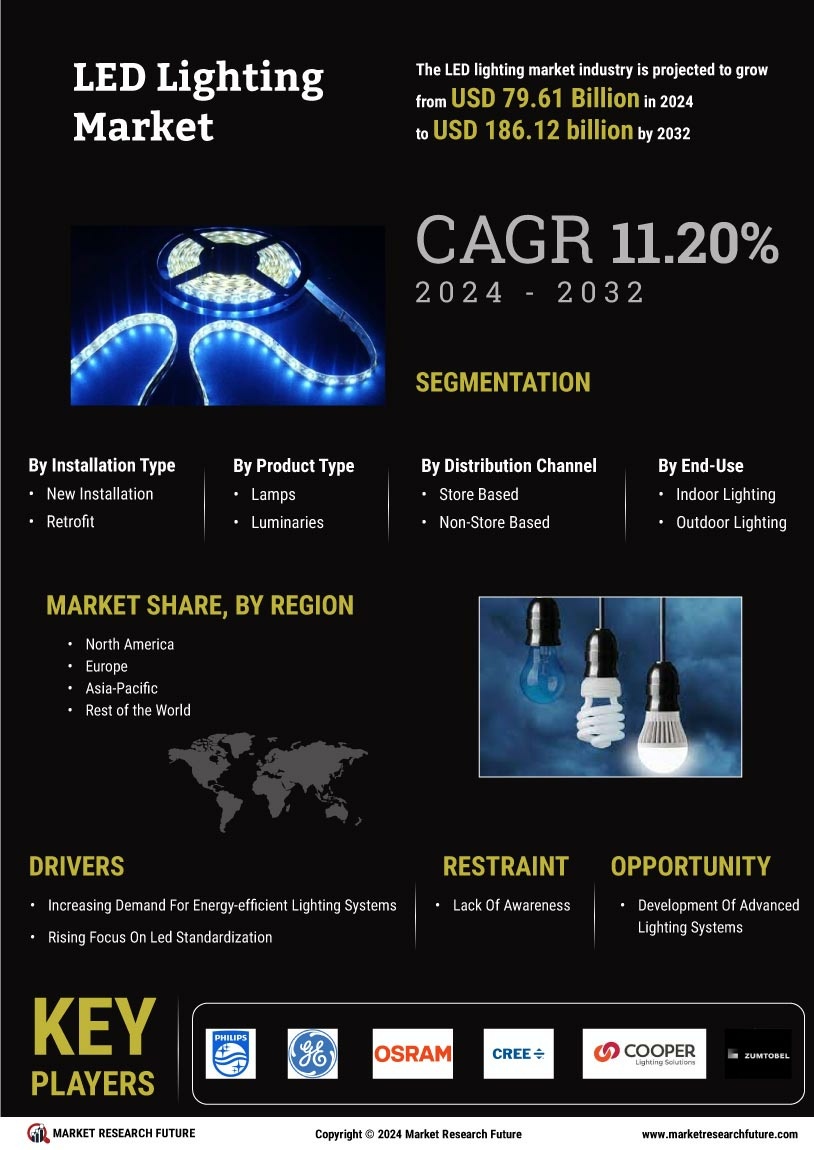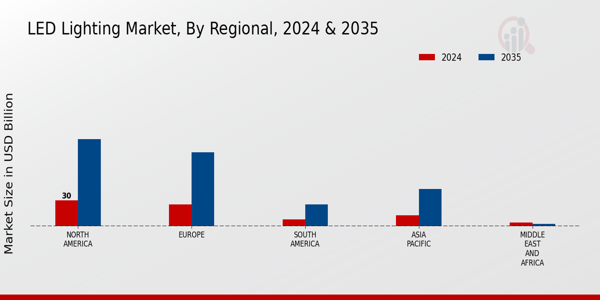The LED Lighting Market has experienced rapid growth and transformation, driven by increasing awareness of energy efficiency, rapid technological advancements, and a shift towards sustainable lighting solutions. The market is characterized by intense competition among various players, each striving to enhance their market share and innovate technologically.
The competitive landscape features a range of established companies and emerging startups, all vying for customer preferences by offering a diverse array of products, including residential, commercial, and industrial lighting options. Critical factors influencing competition include product quality, pricing, distribution strategies, and technological innovation.
The rising demand for smart lighting solutions and connectivity has further fueled the competitive dynamics within the market, prompting companies to invest heavily in research and development to create advanced products that meet evolving consumer needs.
In this space, Luminaire stands out due to its strong market presence and the robust performance of its product lines. As a leader in the LED Lighting Market, Luminaire leverages advanced technology and sustainable practices to produce high-quality, innovative lighting solutions.
The company has established its brand as a symbol of reliability and efficiency, which resonates well with both residential and commercial customers. One of Luminaire's key strengths lies in its ability to provide customizable lighting options tailored to meet specific client requirements, enhancing the user experience.
Furthermore, the company maintains a strong supply chain and distribution network, ensuring timely product availability and fostering customer loyalty. With a focus on continuous improvement and adaptability, Luminaire remains competitive, capturing a significant share of the global market.
Cree is another major player in the LED Lighting Market, known for its innovative approach and cutting-edge technology. The company's offerings include a diverse range of lighting solutions such as LED bulbs, fixtures, and components designed for various applications, ranging from residential spaces to large-scale industrial projects.
Cree's strengths lie in its commitment to sustainability, which is reflected in the energy efficiency and longevity of its products. The company has achieved a strong global presence, thanks to strategic partnerships and a series of mergers and acquisitions that have bolstered its product portfolio and market reach.
Key products provide significant energy savings and enhanced performance, appealing to a wide array of customers. Additionally, Cree's emphasis on research and development allows it to stay at the forefront of technological advancements in the LED lighting market, continuously pushing the boundaries of innovation in product design and performance.















